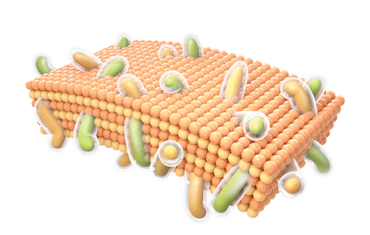Vitamin D3 (cholecalciferol) plays a key role in maintaining bone health, supporting the immune system, and regulating metabolic processes. However, like most vitamins, an overdose can lead to toxic effects.
Vitamin D3 promotes the absorption of calcium and phosphorus in the intestines and prevents bone tissue breakdown. However, excessive intake of vitamin D3 can cause hypercalcemia, a dangerous condition where calcium levels in the blood become too high.
The main risk of a vitamin D3 overdose is hypercalcemia, which can lead to serious consequences such as calcium deposits in soft tissues, kidney damage, kidney stones, heart rhythm disturbances, and even loss of bone mass. Studies show that prolonged intake of large doses of vitamin D3 can cause toxic levels of the vitamin to accumulate in the body.
What are the dangers of excess vitamin D3?
In normal amounts, vitamin D3 promotes calcium absorption and strengthens bones, but its excess leads to excessively high levels of calcium in the blood.
The main symptoms of vitamin D3 overdose include:
- Nausea, vomiting
- Weakness, fatigue
- Thirst and frequent urination
- Confusion, disorientation
- Heart rhythm disturbances
Toxicity Studies
A Mayo Clinic study reported that vitamin D levels above 50 ng/mL in the blood rarely lead to hypercalcemia. However, in some cases, high doses (such as 50,000 IU daily for months) can cause acute toxic reactions.
Moreover, regular intake of high doses of vitamin D can lead to arterial calcification, increasing the risk of cardiovascular diseases.
The Endocrine Society has published updated research on recommended levels of vitamin D3:
Recommendations for Safe Doses
To prevent toxicity, many doctors recommend limiting vitamin D3 intake to 400–800 IU per day, depending on individual needs such as age, gender, activity level, and the presence of certain conditions.
| Age | Male | Female | Pregnancy | Lactation |
| 0-12 months* | 10 mcg | 10 mcg | ||
| (400 IU) | (400 IU) | |||
| 1–13 years | 15 mcg | 15 mcg | ||
| (600 IU) | (600 IU) | |||
| 14–18 years | 15 mcg | 15 mcg | 15 mcg | 15 mcg |
| (600 IU) | (600 IU) | (600 IU) | (600 IU) | |
| 19–50 years | 15 mcg | 15 mcg | 15 mcg | 15 mcg |
| (600 IU) | (600 IU) | (600 IU) | (600 IU) | |
| 51–70 years | 15 mcg | 15 mcg | ||
| (600 IU) | (600 IU) | |||
| >70 years | 20 mcg | 20 mcg | ||
| (800 IU) | (800 IU) |
The Endocrine Society of the USA provides the following 2024 recommendations on vitamin D for disease prevention:
- Routine screening of 25(OH)D levels is not recommended for healthy adults.
- This recommendation applies to adults who do not have other established indications for testing 25(OH)D levels (e.g., hypocalcemia).
- Empirical intake of vitamin D exceeding the recommended intake levels is not advised. Adults should follow the recommended daily intake of 800 IU of vitamin D3.
Conclusion
Vitamin D3 is important for health, but an overdose can cause serious problems, especially with prolonged intake of high doses.
Taking preventive doses of vitamin D3 can help avoid serious consequences.






